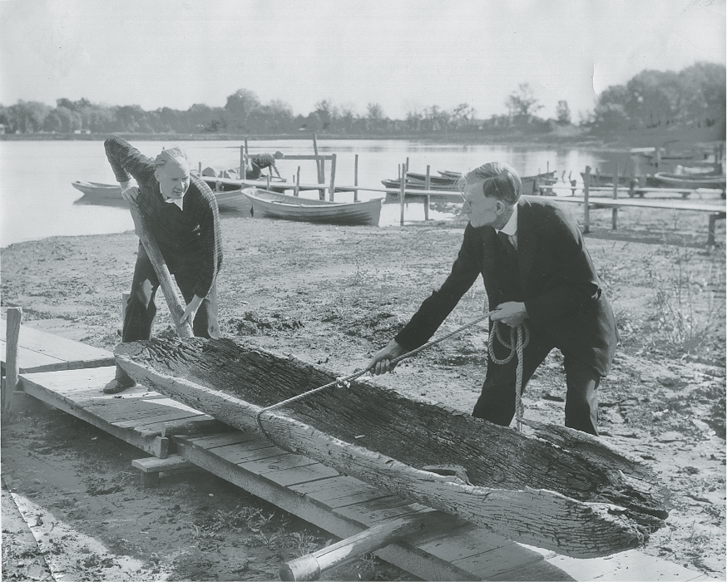Jason:
My apologies for not responding earlier. I haven't been very active on the Forums in the past few months and have only just seen your post. I'll do my best to try to answer.
Firstly, an attempt to appraise your dugout presents a very difficult challenge from almost any perspective. Fair market value appraisals are usually based on either or both of two 'approaches': a "comparable sales approach" or a "cost approach". In your case, either is difficult to establish. Simply put, there aren't many of these things kicking around - thus extremely difficult to point to any reliable "comparable sales". Secondly, there really aren't many being made these days, so difficult to surmise, either, what a "replacement cost" would be. And, then, even if you could come up with a replacement cost for new, that completely ignores the historic/antique element which is the real essence of what your dugout is all about.
One also has to factor in some sense of market desirability or attractiveness. Here, you're looking at a very niche, highly limited scope of potential buyers. Museums would be the most likely of any interested group; how likely remains to be determined, and most of them have very limited acquisition budgets, as well as other priority needs. Avid canoe collectors are the next possibility, but finding a deeply committed canoe history buff that wants to invest in what is essentially a "decaying log" may take a bit of convincing; you'll be competing against many other rare, antique canoes which likely have greater decorative eye appeal. Perhaps there's a bar or restaurant owner prepared to shake loose a few bucks in order to display a conversation piece at the entrance to his/her establishment. Such are the hard facts and economics of selling/placing an old dugout. The stars have to properly align in order to get it done, and that happens only rarely.
I do appraisals on donated canoe intake for the Canadian Canoe Museum. I did have occasion a few years back to do a similar appraisal on an older dugout, not as ancient as yours, and not original to North American lakes or Indigenous cultures. The one being offered originated in Africa in the mid-1900's; it had been commissioned by a Canadian firm doing contract work along a mid-continent African river; they needed something to work along the bank, and hired a local tribe to build a typical dugout. Upon being brought back to Canada by the contractor, it became a garden ornament and planter; as a result, there was some rot and loss. Still, it filled a gap as far as museum display needs went. But how was I to even remotely begin to appraise it?
There was not a lot of antiquity or historic value to consider. I ended up, as I recall, by placing a nominal value on it relative to what the contractor had paid the local tribal builders - I recall something in the order of $500-$700. Then, I added something to cover the shipping costs from Africa to Canada; it came back with other materials, so an allowance of roughly $1300 - $1500 was suggested. In all, I believe a donation receipt for $2,000 was the result.
Beyond that, I can't really address your specific question about whether and how many older Indigenous dugouts have been found and/or sold in Ontario. You could try asking Jeremy Ward, Curator at the Canadian Canoe Museum, or his assistant, Beth Stanley, for some background. I do believe the Museum has several such pieces, though what associated values any have been accorded is not known to me. You might also try asking Curators at the Canadian Museum of History, and perhaps the Smithsonian for similar background. A lot of any value is going to depend on positively tying your dugout to a particular culture and/or maker. The more you can do this, the more likely you are to establish any value of consequence. If that becomes impossible to ascertain, then the question will become: do you have much more than an ordinary, unknown old log that looks like it might once have been a boat? What, if any, value does it have beyond mulch or firewood? For that, you need some archaeological assistance and evidence of significant historical importance. Lots of homework to do, but a great opportunity also.
Cheers, and good luck.





